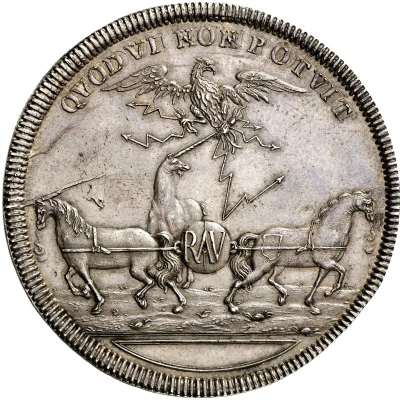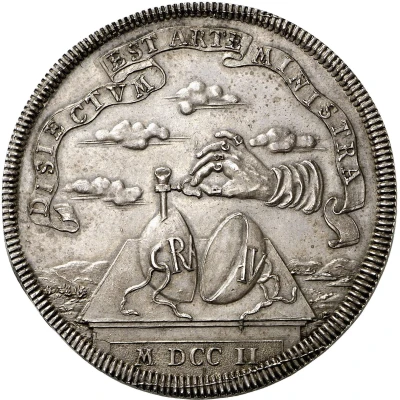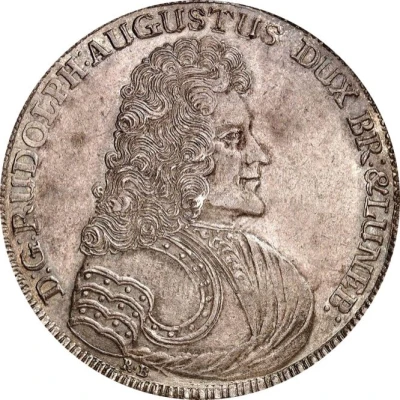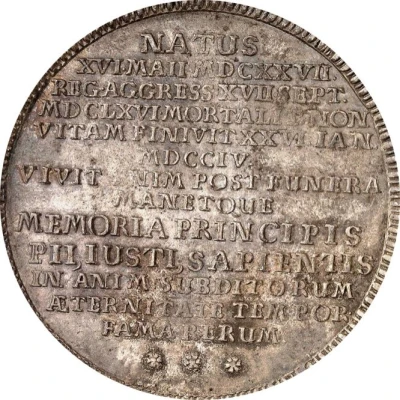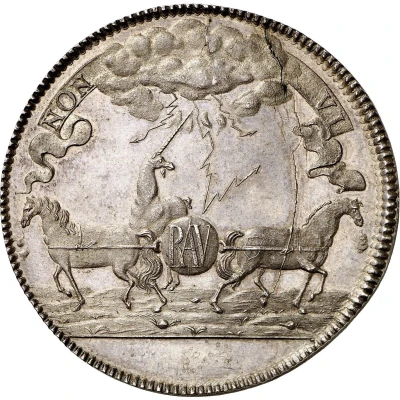
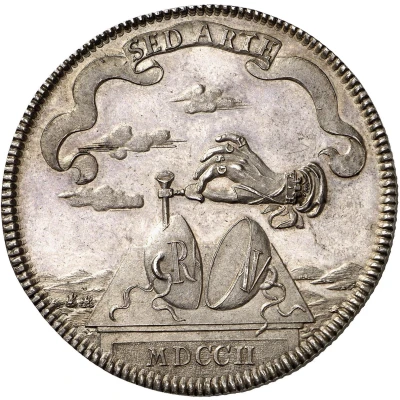

© Fritz Rudolf Künker GmbH & Co. KG, Osnabrück and Lübke & Wiedemann KG, Leonberg
1 Thaler Luftpumpentaler - Rudolph August and Anthony Ulrich
1702 year| Silver | 29.33 g | - |
| Issuer | Principality of Brunswick-Wolfenbüttel (German States) |
|---|---|
| Prince | Rudolph Augustus (Rudolf August) (1666-1704) Anthony Ulrich (Anton Ulrich) (1685-1714) |
| Type | Circulating commemorative coin |
| Year | 1702 |
| Value | 1 Thaler |
| Currency | Thaler (1499-1814) |
| Composition | Silver |
| Weight | 29.33 g |
| Shape | Round |
| Demonetized | Yes |
| Updated | 2024-10-05 |
| Numista | N#301731 |
|---|---|
| Rarity index | 97% |
Reverse
Broken orb with monogram on column, hand above at right, clouds in background.
Script: Latin
Lettering: SED ARTE
Comment
The present Reichstaler shows the physical experiment of Magdeburg councilor and mayor Otto von Guericke (1602-1686): Two hollow hemispheres are drawn in a vacuum and pressed together by air pressure.There are two interpretations of the meaning of this coin: The oldest, namely by the contemporary Johann David Köhler (1684–1755) in his book on coin amusements (Vol. 16, 41. 42, pp. 321-336 of 1744), offers a political explanation. The two horses are the steeds of the house of Celle and Hanover. The unicorn represents the coat of arms holder of Great Britain, the lightning-throwing eagle (Or thunder in the clouds) the emperor. Köhler dissolves the bracelet with the Holstein nettle leaf and the letters H - A as Duke Hans Adolf of Schleswig-Holstein-Sonderburg-Plön, Rudolf August's son-in-law. He had delivered the imperial mandate and thus dissolved fraternal unity.
The other explanation is provided by Friedrich Freiherr von Schrötter (dictionary of coinage, see v. Luftpumpentaler). The hand with the bracelet is a female hand and belongs to the wife of Anton Ulrich, who was a born princess of Holstein and who caused the separation of the brothers through her intrigues. However, the letters are not taken into account.
Interesting fact
One interesting fact about the 1 Thaler (Luftpumpentaler) coin is that it features a unique design element - a small relief of a windmill on the reverse side, which was added to commemorate the invention of the windmill by Rudolph August and Anthony Ulrich in 1702. This coin was minted in the Principality of Brunswick-Wolfenbüttel, which was a small state in what is now northern Germany, and it was made of silver, weighing 29.33 grams.
